With the beginning of a new semester, many students will resume research. Today we might be familiar with electronic resources and online library catalogs, but in the past people searched for and located library materials in a different way. Let’s take a look at the card catalog.
Classified Illustrated Catalog of the Library Department of Library Bureau (1899) by Library Bureau is packed with illustrations and descriptions of library supplies and equipment. This includes card catalogs and related accessories.
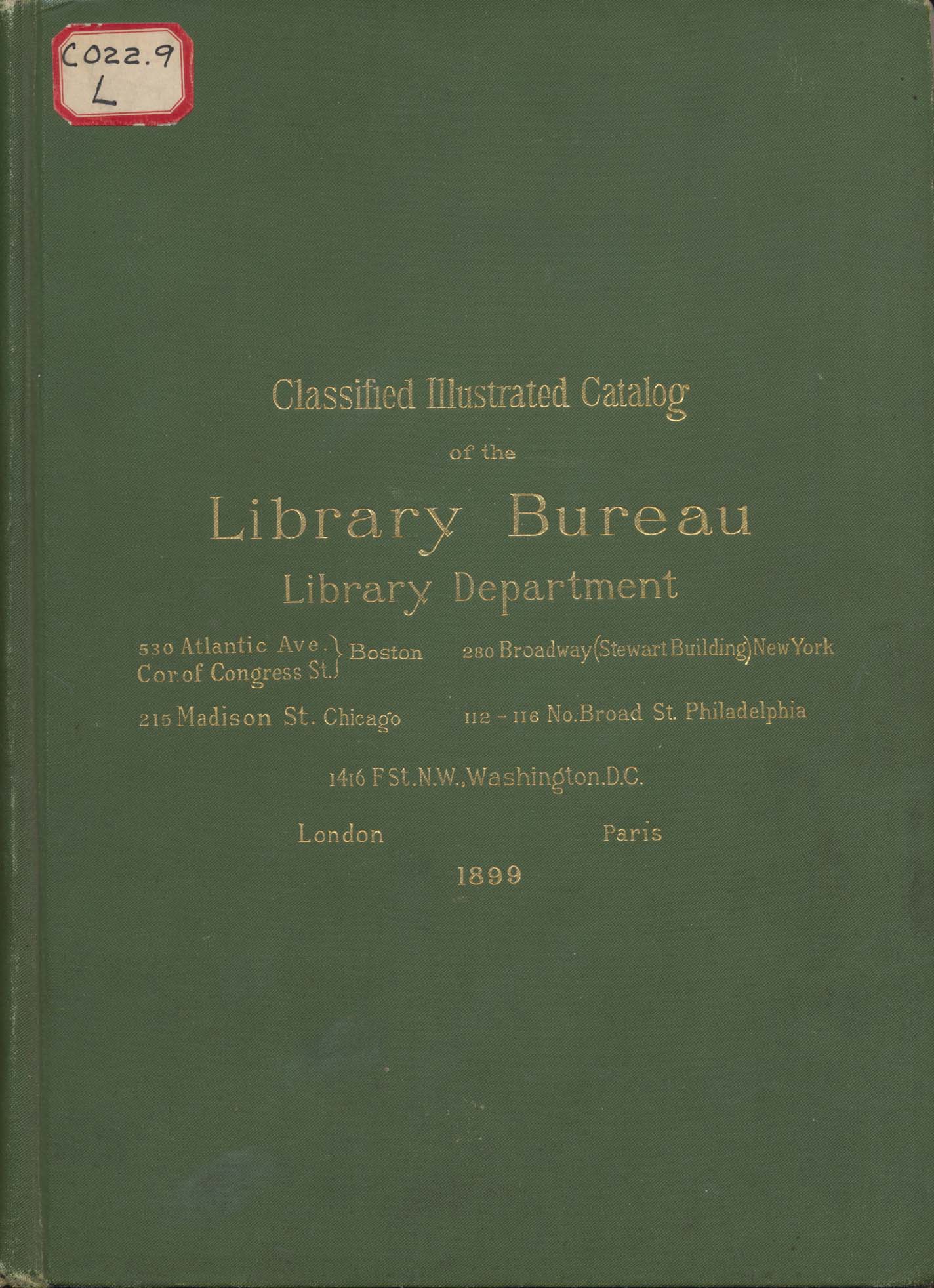
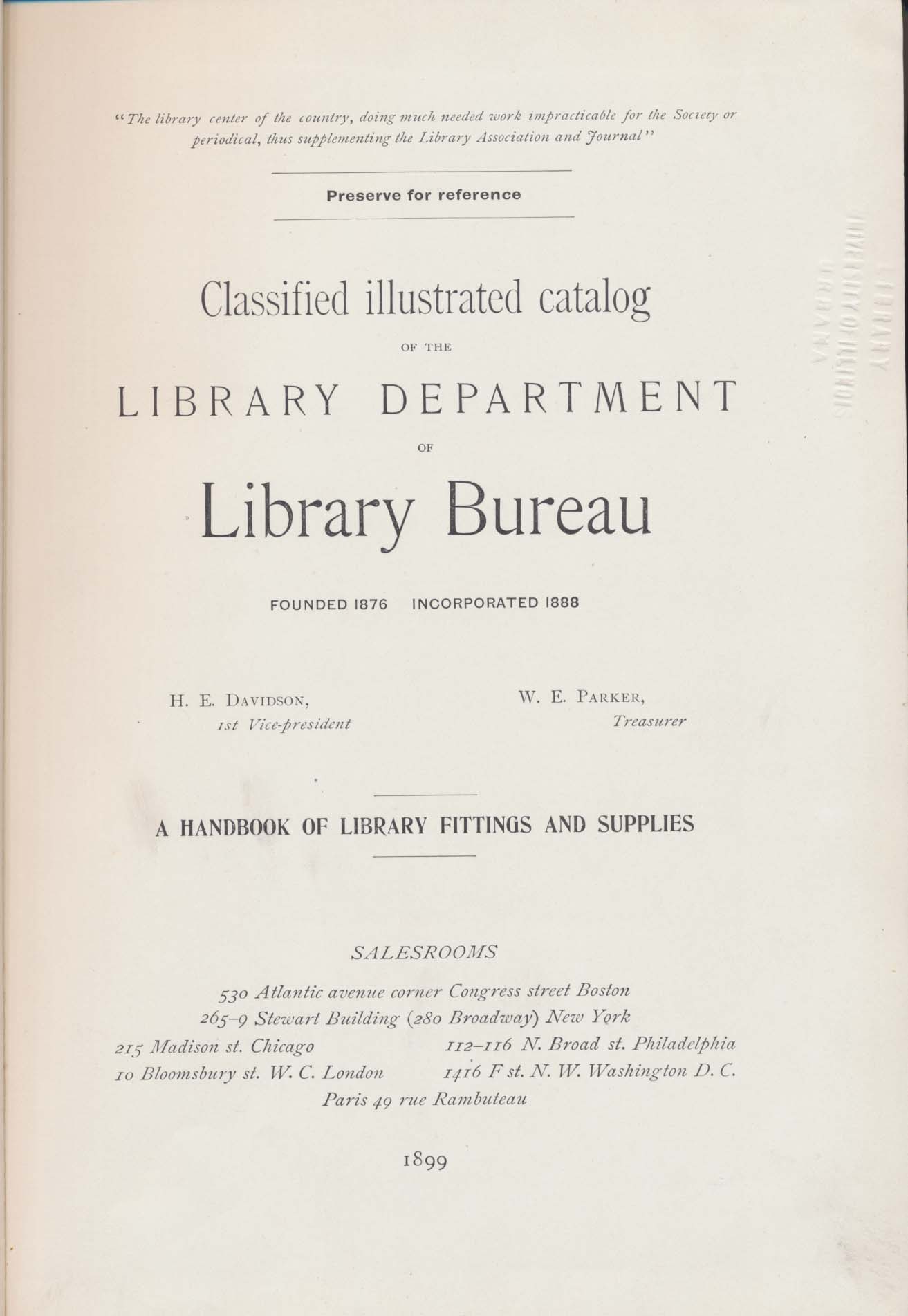
The card catalog was a case of drawers or trays filled with a series of cards cut to exact dimensions. Each card noted bibliographic information about a specific book. Cards were filed in a pre-determined sequence to aid in searching for specific books. The filing sequence was typically alphabetical by author, title, or subject. Other filing options included number or date. This made it easy to insert a card when adding a book to the collection or remove a card when withdrawing a book from the collection. It also allowed altering of the filing sequence. Changing the filing sequence simply required a shuffling of cards within the drawers or trays. The set-up of the card catalog provided an “ease of keeping it up to date and in perfect order.”
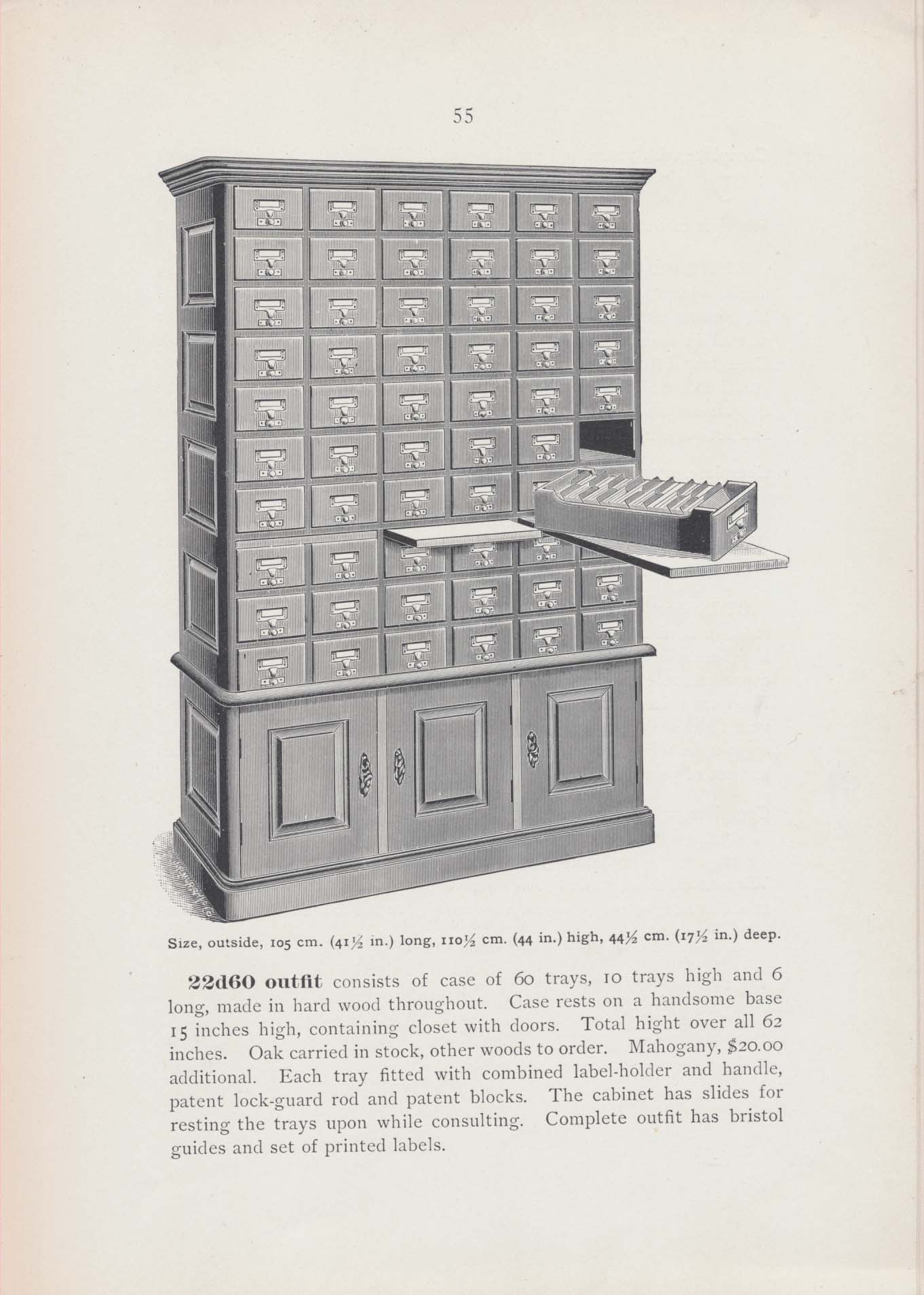
The cases housing card catalogs were made of wood and available in varying sizes and styles. Cases were fitted with either drawers or trays. Drawers were not removable while trays were completely removable, as shown in the image below. Some cases rested on bases which doubled as closets providing extra storage, like the card catalog shown above. Other cases had a revolving top for easier access. There was also a handy feature called the slide. When pulled out, the slide created a flat surface or platform to rest a tray, as shown below.
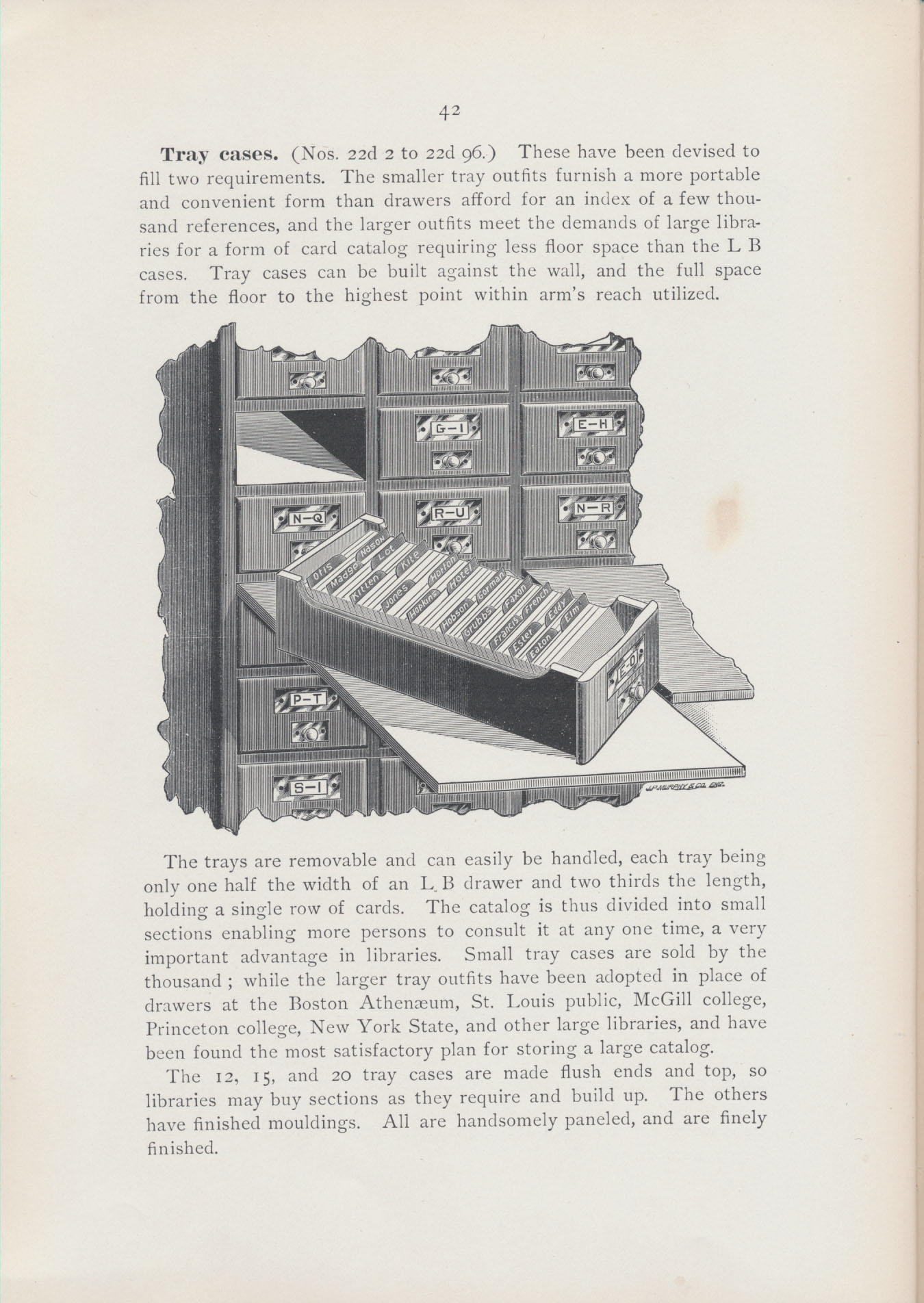
The case for the card catalog was important, but the cards themselves, complete with bibliographic information describing books, were integral to the whole system. The cards were cut to a specific size with square edges (no round edges) for easy handling. Size No. 32 was approximately 2 x 5 inches while size No. 33 was slightly larger at approximately 3 x 5 inches. According to this 1899 trade catalog, No. 33 was the standard and most used card size at the time. The weight of the cards, which determined thickness, was important as well. Weight was available in “l,” “r,” or “x” with “x” being the heaviest. Cards were available as either ruled or plain and colors included white, salmon, buff, or blue. The No. 33 card, ruled, is shown below.
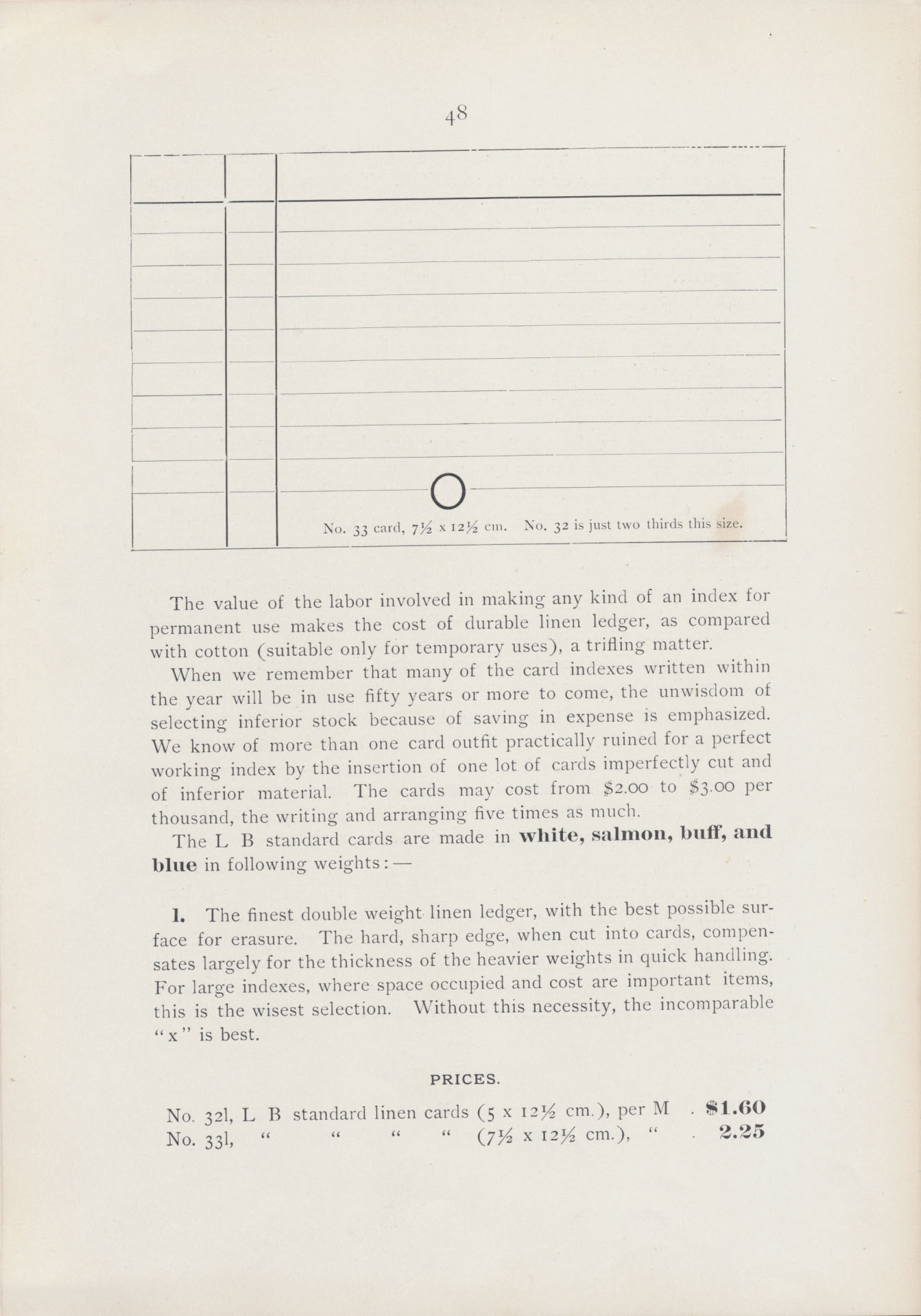
Cards were typically punched with a hole. This allowed the cards to be threaded onto a lock-guard rod which ran from front to back through each row of cards. By placing cards on the rod, it prevented cards from mistakenly being removed or shuffled out of place. When needed, unlocking the rod to remove or add a card was a simple process.
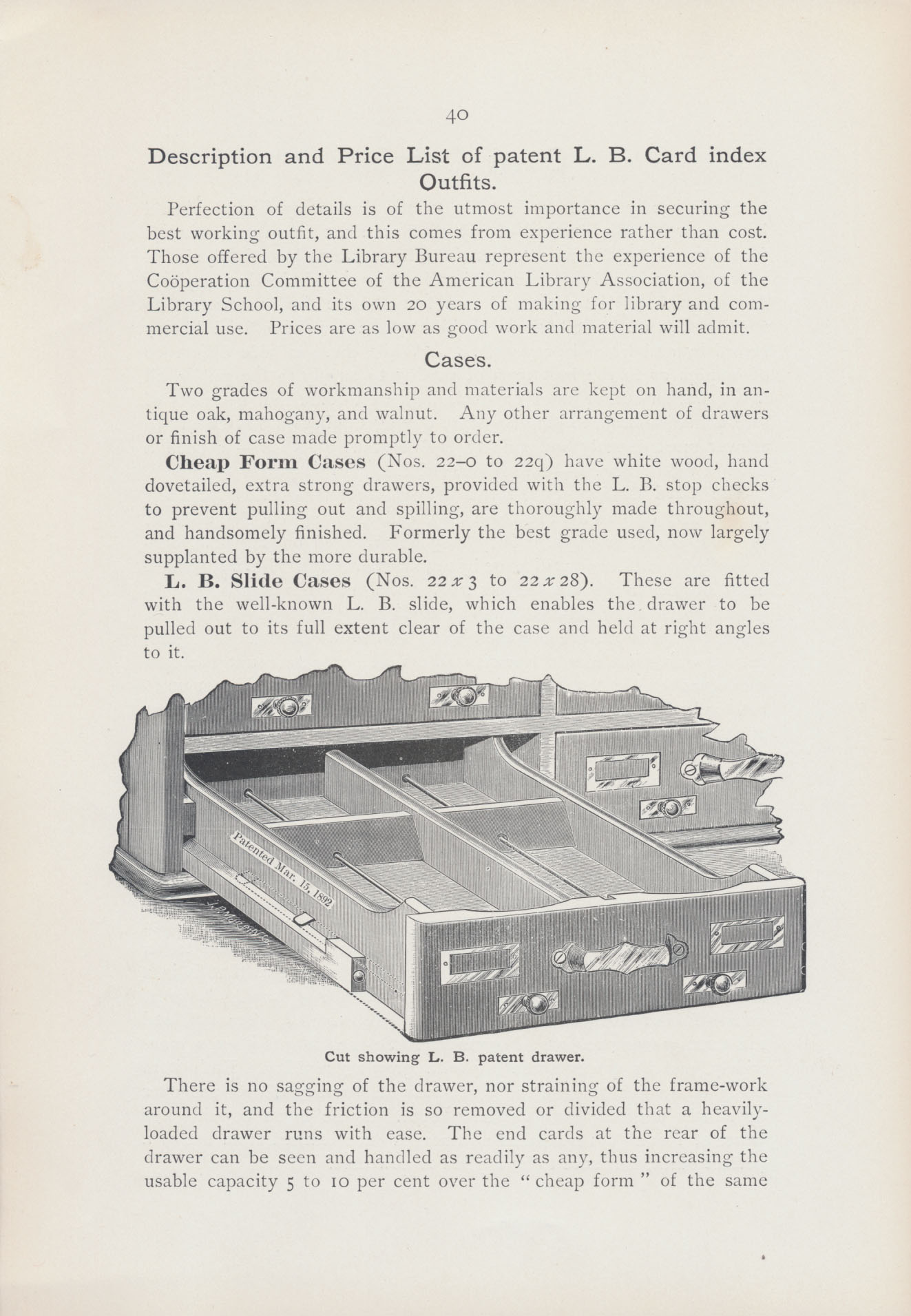
A small two-tray case, like the one illustrated below, held 2,000 cards, size 33 l. Larger cases held as many as 96 trays housing between 56,000 and 112,000 cards, depending on the weight of cards used. Heavier weight cards limited the number of cards that fit in a drawer or tray.
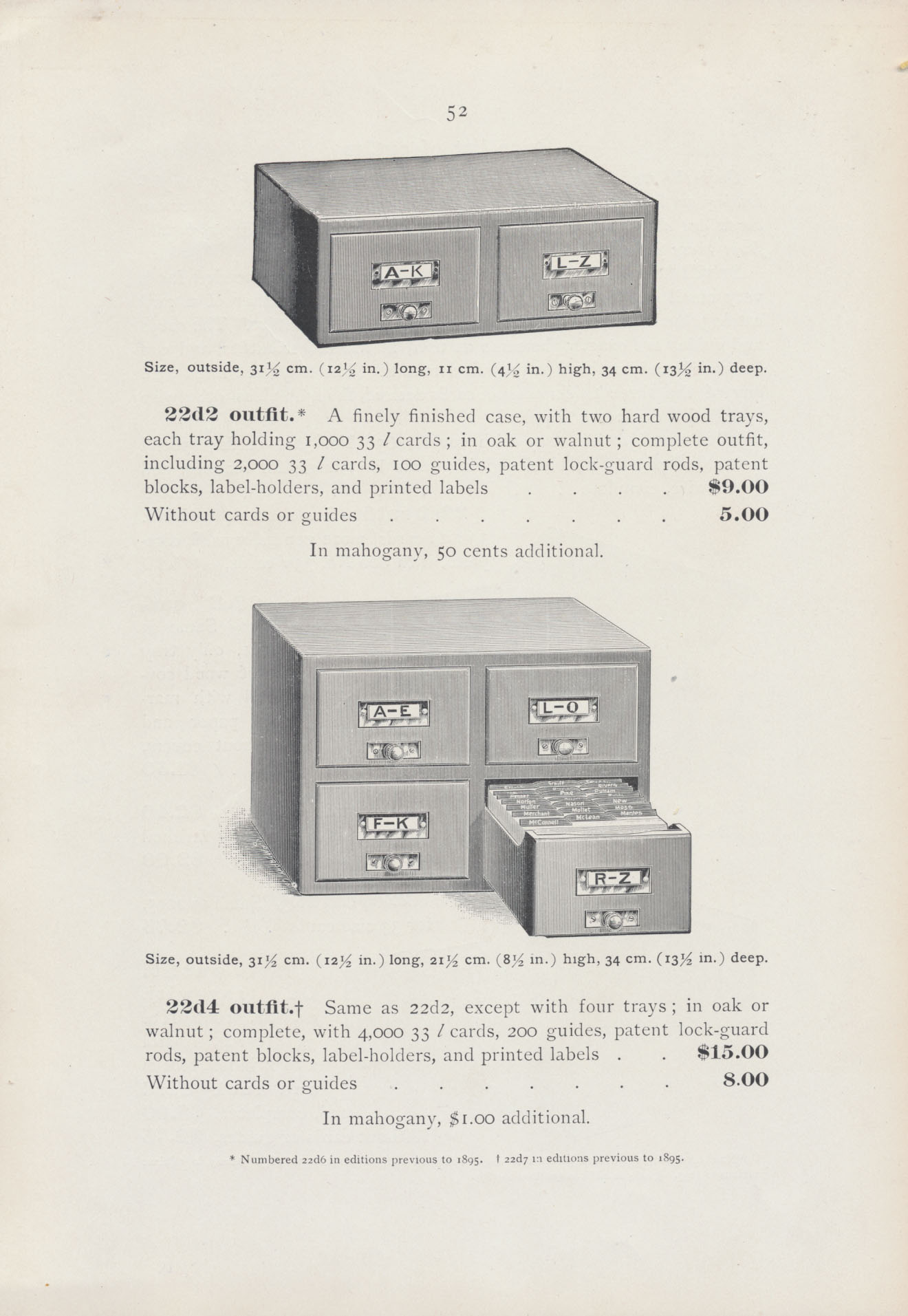
A printed label inserted in a label-holder displayed on the outside of each drawer or tray indicated the range of cards filed in that section. Inside the drawer or tray, guides were placed at various points within the series of cards to further break it down into smaller sections. In the image below, the open drawer shows guides labeled “Abel,” “Albright,” “Appleby,” and so forth leading the user to the appropriate card. Another accessory was the triangular block. Its placement at the end of each row of cards created an easily readable angle for the cards. By sliding the rear block, a series of cards could be shortened or lengthened to accommodate a desired quantity of cards in the drawer or tray.
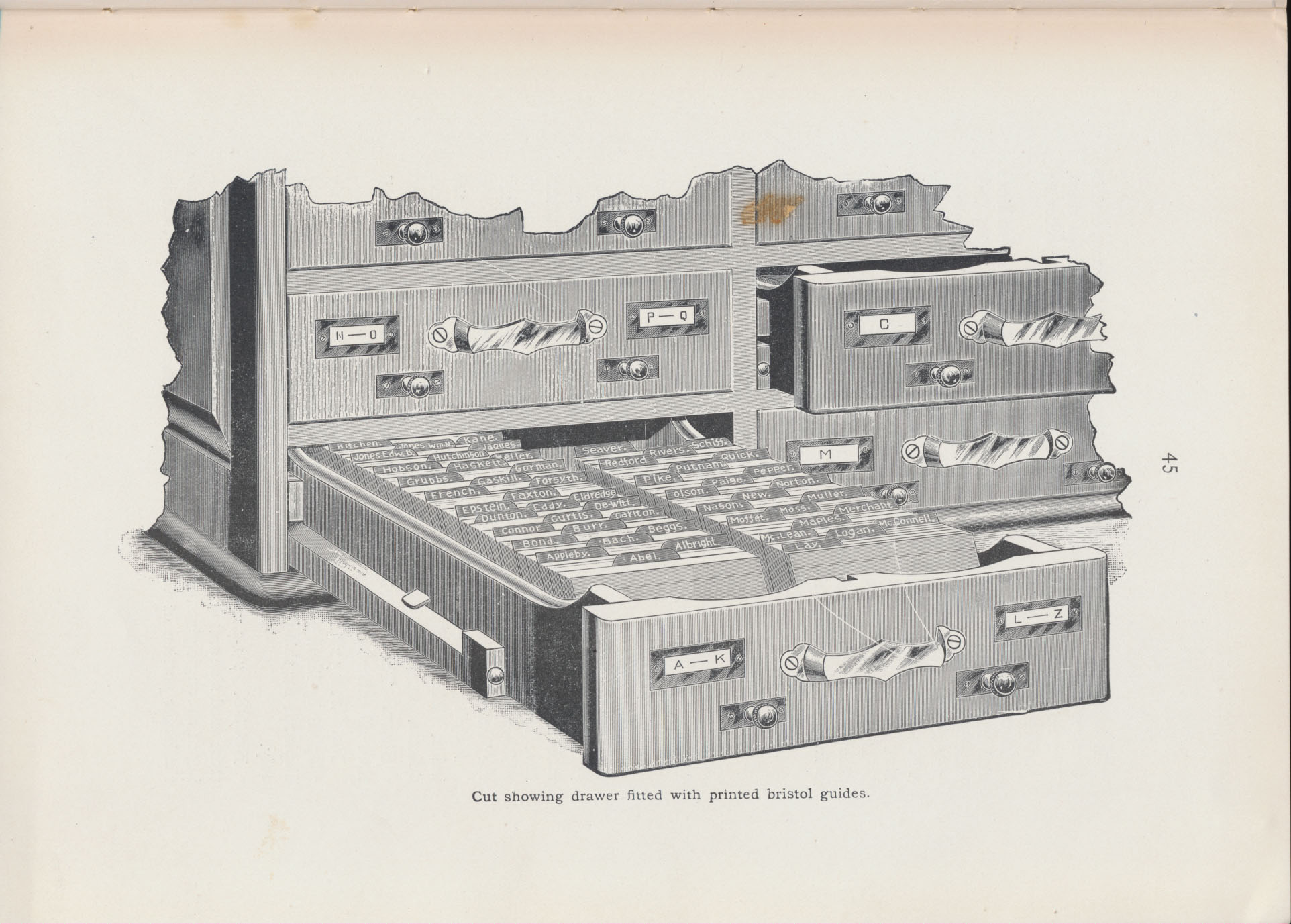
Just like today’s online library catalog, the card catalog of the past was essential to the work of both researchers and library staff. It led researchers to books and assisted staff with collections management decisions. Classified Illustrated Catalog of the Library Department of Library Bureau (1899) and other trade catalogs by Library Bureau are located in the Trade Literature Collection at the National Museum of American History Library. Want to check out more Library Bureau trade literature? Take a look at a post about school libraries and another post highlighting various library charging systems.

2 Comments
Library furniture was always built for daily use. I’ve repurposed a few 90 year old card catalogs when the high school I worked in trashed them in favor of digital kiosks. I actually used these particular card catalogs in the early 1970’s when I was a high school student. I went on to work in my old high school. These catalogs have different sized drawers with lovely brass hardware. They are beautiful, stackable and functional parts of my home.
Thank you for the detail and history. When I first went to the library they still had these. Loved searching through them.